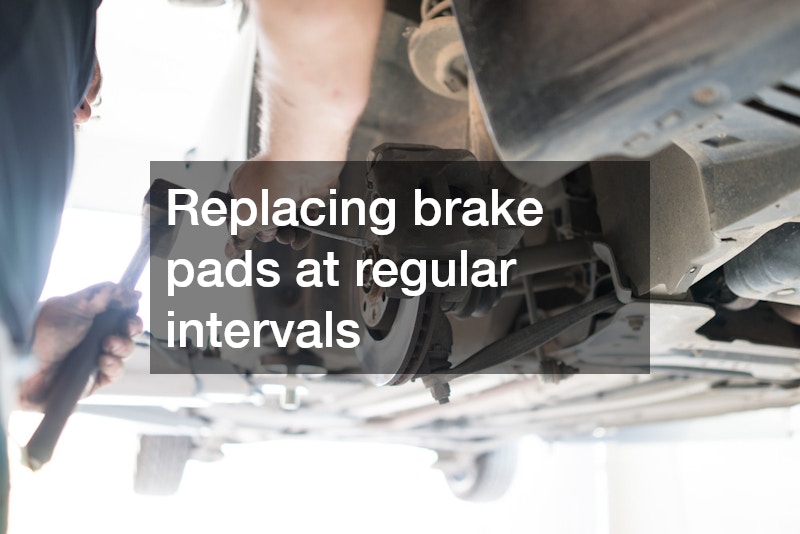
Brake system service is a critical maintenance activity for any car owner. Brakes experience a lot of wear and tear during the winter months. Driving conditions, cold temperatures, and other factors can put a great deal of stress on the brake system. It is important to have your brake system evaluated periodically.
It is a good idea to have your brakes checked and serviced, if necessary, during your spring maintenance appointment. Car brake maintenance is an essential part of car maintenance, and reliable stopping capability is critical to driver safety. Each year many car accidents are reported, occurring because of faulty equipment. Brake failures are near the top of the list regarding car accidents caused by faulty equipment. Keeping your brakes in good condition with the help of a trusted mechanic helps to keep you and your passengers safer on the road.

Brake mechanics can service brakes and ensure safe operation. Early interventions like replacing brake pads at regular intervals can protect your brake system and save you money. A safe brake system delivers peace of mind. Make sure you make it a point to get the brake care needed in the spring to start the season off right and worry-free.


The winter can put a lot of wear and tear on our vehicles. The engine and transmission work much harder in icy and snowy weather conditions. The cold can freeze up many of the important parts of the transmission. Even if you prepare with the best tires, regular oil changes, and transmission inspections before winter arrives, it is also important to have your vehicles inspected for the following spring routine maintenance.
Oil change
If you had an oil change in the fall to prepare for the winter, it is likely that it is time for another oil change in the spring. Winter weather conditions tend to put more effort on the important mechanical parts of your vehicles, so this oil change is more important than ever. However, the exact time that your vehicle requires an oil change depends on where you live, your driving habits, and the amount of miles on your vehicle. The rule of changing oil every 3,000 miles is no longer the standard, as depending on driving habits, drivers could change oil every 7,500 miles or more.
Transmission repairs
Because your transmission is working harder than ever over the winter, it may require transmission repairs once spring arrivers. The best way to find out if your transmission requires repairs is to set up a routine inspection. Your transmission may need to be repaired, or it may be recommended that you complete replace your current transmission. Fortunately, rebuilt transmissions and remanufactured transmissions are very cost effective options for those requiring a new one.
Cooling system flush
It can be very uncomfortable to have a vehicle in the warm spring and summer months with a poor cooling system. If you wait until the heat of summer to test and correct your air conditioning, you could be stuck with an expensive maintenance visit or weeks without a cooling system. Kelly Blue Book recommends flushing the cooling system in a car once a year. The perfect time to schedule this cooling flush is when you have the rest of your vehicle inspected in the spring months.
Tire replacements and rotations
Ice and other winter related driving conditions also put a lot of wear and tear onto our vehicle?s tires. According to a National Highway Traffic Safety Administration study, cars with tires that are under inflated by 25% are three times more likely to be part of a crash involving tire problems. It is extremely important to have your tires tested after heavy winter driving. When you schedule your transmission service, you can usually request that the shop also inspect and rotate your tires. In most cases, you will not require new tires, but your current tires may require minimal repairs or air.
Vehicle electronics
Although the electronics in your vehicle may not sustain as much damage in the winter as other parts of your vehicle, they should also be routinely inspected. This is especially true if you live in a part of the country that gets extremely cold temperatures. Cold weather and low frequency of driving your vehicle can cause the electronics to have problems. Usually, they can easily be fixed at a cost efficient price, if the problem is found soon enough. Your transmission shop may or may not also provide vehicle electronic inspections. However, if you have a problem with the wiring and technology of your vehicle, you may have to visit the manufacturer or a car electrician for complex repairs.
Not only is the winter cold and dark, but it also provides excessive damage to our vehicles. As spring slowly makes its appearance, it is the perfect time to complete your spring vehicle inspection and needed maintenance. The spring is the perfect time to inspect and replace tires, if needed. It is also a great time to have your transmission inspected and repaired. Additional maintenance tasks should also include oil change, transmission fluid change, and an AC cooling flush. These maintenance tasks will ensure that your vehicle is ready for the ready of the summer.